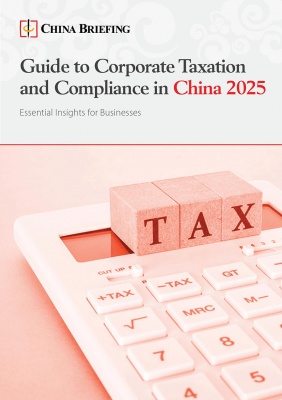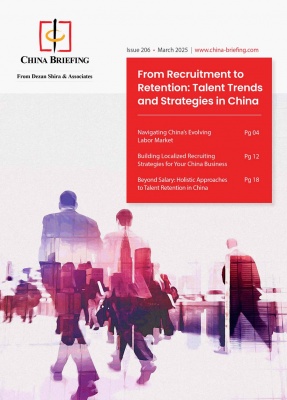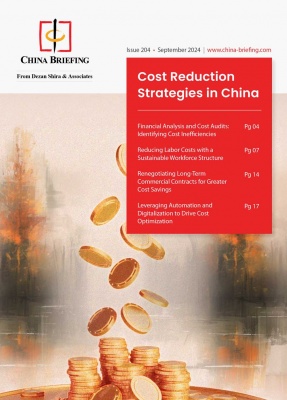China’s Economic and Sports Industry Gains from Paris 2024 Olympics
The Paris 2024 Olympics offer China a prime opportunity to enhance its global image, boost trade, and expand its market presence through sports-related exports and e-commerce. Additionally, the Games fuel China’s sports industry growth, supported by government policies and increasing public interest in fitness and sports.
The Paris 2024 Olympic and Paralympic Games are one of the premier global events, showcasing athletic excellence and cultural exchange on an international stage. Now underway amidst widespread anticipation, the Games represent not only a celebration of sport but also a pivotal moment for participating nations to enhance their global presence. Renowned for transcending borders and uniting nations under the banner of sportsmanship and competition, the Olympics also serve as a beacon of diplomacy, cultural exchange, and economic opportunity. As such, the Paris 2024 Olympics offer countries a unique platform to showcase their strengths and capabilities to a global audience.
For China, a key player in the global economy, the Olympics present a strategic opportunity to bolster its international image and influence. Participation in this prestigious event allows China to highlight its advancements in technology, infrastructure, and cultural diplomacy. Additionally, the Games serve as a catalyst for expanding trade relations and fostering business partnerships on a global scale.
The Paris 2024 Olympics provide numerous opportunities for Chinese businesses to engage in international trade and commerce. From sponsorship deals and product placements to export opportunities and investment ventures, Chinese enterprises can leverage the global attention surrounding the Games to strengthen their market presence abroad. Sectors such as technology, consumer goods, and sports equipment are particularly poised to benefit from increased visibility and consumer interest generated by the Olympics.
In this article, we explore how the Paris 2024 Olympics influence China’s economic prospects. By examining the strategic implications of the Games on China’s global brand enhancement, trade relations, and economic opportunities, we aim to provide insights into the broader impact of international sporting events on global economies.
Leveraging major sports events for global branding
In the world of marketing, major sports events provide unparalleled reach and engagement, with the Olympics standing as the pinnacle. This global stage allows brands to connect with audiences in meaningful ways.
Coca-Cola, a long-time Olympic sponsor, has used the Games to emphasize unity and togetherness since 1928, while Nike has aligned itself with sports excellence through athlete endorsements and themed apparel. The FIFA World Cup similarly offers branding opportunities, with Adidas showcasing sportswear and Budweiser crafting engaging campaigns. At the Super Bowl, Pepsi and Anheuser-Busch invest heavily in creative ads, with Pepsi’s halftime show becoming a notable cultural event that amplifies the brand’s reach.
The recent UEFA Euro 2024 championship highlighted the growing role of sports events in branding, especially showcasing the increasing influence of Chinese companies. Five of the 13 official global sponsors were Chinese: Hisense, AliExpress, Ant Group (owner of Alipay), Vivo, and BYD. This significant presence underscores Chinese brands’ strategic push for international visibility.
Hisense, continuing its Euros sponsorship from previous years, showcased its products through pitchside ads and provided screens for video assistant referees (VAR). AliExpress partnered with English footballer David Beckham for its ‘Score More with AliExpress’ campaign and engaged fans with app-based prize giveaways. Vivo and BYD also used their sponsorships to strengthen their global presence.
These efforts reflect a broader trend where Chinese companies use sports sponsorships to enhance their international footprint. According to data collected by the China-Britain Business Council, for example, Hisense experienced an 83 percent increase in overseas revenue following its previous Euro sponsorships. Similarly, Alibaba boosted its weekly active users on AliExpress–the e-commerce’s international division–by up to 70 percent through its Euros-related marketing, demonstrating how effectively sports events can drive e-commerce growth and global engagement.
Similarly, the visibility of Chinese brands is further amplified by their roles as official partners and sponsors of the 2024 Olympics. Major Chinese companies, including Alibaba and Mengniu, are top-tier sponsors of the Games. Mengniu, notably, is the sole Chinese consumer goods company among the global Olympic partners, enhancing its brand visibility on an international stage. These partnerships not only boost brand recognition but also create avenues for increased consumer engagement and market penetration.
Economic opportunities arising from the Paris 2024 Olympics
Surge in export demand of sports equipment and Olympics-related goods
The run-up to the Paris Olympics has seen a substantial boost in demand for Chinese-made goods, driven by both the Olympics’ scale and China’s robust manufacturing capabilities. Data from various sources highlight a sharp increase in the export of Chinese sports goods and event-related products.
For instance, from January to April 2024, exports of sports equipment from Guangzhou exceeded RMB 15.9 billion (US$2.22 billion). In Zhejiang, a major manufacturing hub, sports goods exports surpassed RMB 10 billion (US$1.39 billion), during the same period, marking a 24.8 percent year-on-year increase. Notably, Yiwu, a key player in global small commodity trade, reported a remarkable 45.6 percent increase in sports equipment exports.
This surge is partly attributed to the significant role of Chinese manufacturers in producing Olympic merchandise. The Paris Organizing Committee has confirmed that 80 percent of the Olympic mascots are made in China, with a substantial portion produced in Yiwu. This dominance underscores China’s strategic advantage in the global supply chain for the Paris 2024 Olympics event-related products.
Peak in cross border e-commerce activity
The excitement of the 2024 Paris Olympics has significantly impacted the digital marketplace, with Chinese e-commerce platforms like Temu, SHEIN, and AliExpress capitalizing on the event. These platforms have leveraged the Olympic buzz to boost their visibility in Europe, offering everything from budget accessories to high-end sports gear. The competition among these sellers mirrors the intensity of the sports events, featuring aggressive pricing and strategic promotions. This surge in e-commerce is conductive in helping Chinese sellers address challenges in building brand recognition and breaking into mainstream European markets.
Tourism and travel surge for the Paris 2024 Olympics
The Paris 2024 Olympics have significantly impacted tourism and travel between China and France, highlighting the event’s potential to boost international connections and economic activity. A remarkable surge in flight bookings and travel-related activities has been observed covering the period of the Games–from July 24 to August 11, 2024–despite the aviation sector still grappling with the aftermath of the pandemic.
During the Paris 2024 Olympics period, flight bookings from China to France have more than doubled compared to the same period in 2023. Data from Umetrip revealed that bookings surged by 114 percent, and travel to Paris saw a 194 percent increase in hotel reservations year-on-year. This sharp rise reflects the Olympics’ ability to attract a substantial influx of tourists, eager to experience the Games firsthand.
The frequency of flights between China and France also saw a significant uptick. There were over 100 weekly passenger flights between the two countries, marking a 60 percent increase from the previous year. However, this increase still falls short of pre-pandemic levels. Flight Master data indicated that during the Olympics, there were 284 flights scheduled on the China-France route, up 70 percent from 2023 but still well below the 461 flights in the same period of 2019.
Despite these gains, the aviation industry faces challenges in fully restoring pre-pandemic flight volumes. The only foreign carrier on the China-France route, Air France-KLM Group, has yet to restore its pre-pandemic flight levels. For the 2024 summer season, the airline scheduled seven weekly flights each to Beijing, Shanghai, and Hong Kong, down from the 14 weekly flights to Beijing and 10 to Shanghai before the pandemic.
Yet, the surge in travel and tourism associated with the Olympics presents significant economic opportunities for both China and France. The increased visitor numbers are likely to drive spending in local economies, from hospitality to retail sectors. For Chinese travelers, the Paris Olympics offer a unique chance to engage with global events, while boosting international tourism ties.
The “Olympics Effect”: China’s developing sports industry trends
Winning medals and showcasing national athletic prowess are important, but the broader significance of the Olympics lies in sparking public interest in the sports industry, enhancing physical fitness, and improving overall health.
Government support to China’s sports and fitness industry
In recent years, China has implemented several policies to promote comprehensive fitness and the construction of a strong sports nation.
Following the successful hosting of the Beijing Olympics in 2008, China designated August 8 as National Fitness Day each year and elevated national fitness to a strategic priority in 2014. The 19th National Congress of the Communist Party outlined the goal to “widely promote national fitness activities and accelerate the development of a sports powerhouse.” To achieve this goal, in 2019 the State Council released the Outline for Building a Leading Sports Nation, a plan which aims to develop the country of 1.4 billion people into a “modern sports power” by 2050.
Similarly, the 14th Five-Year Plan further specifies the goal of establishing China as a sports powerhouse by 2035, highlighting the nation’s significant focus on sports development.
To advance the level of national fitness and address existing gaps, in 2021 the State Council also issued the National Fitness Plan (2021–2025). This plan outlines four specific goals and eight major tasks for fitness initiatives during the 14th Five-Year Plan period: by 2025, the proportion of people regularly participating in physical exercise is expected to reach 38.5 percent; public fitness facilities at the county, town, and village levels will achieve full coverage; and there will be 2.16 social sports instructors per thousand people.
The table below includes more policy examples:
| China’s Sports Industry Related Policies | |||
| Time | Policy | Issuing department | Main content |
| October, 2021 | “14th Five-Year Plan for Sports Development” | General Administration of Sport of China | Comprehensive deployment of national sports development during the “14th Five-Year Plan” period, aiming to better promote the sports industry as a pillar of the national economy. |
| October, 2021 | Guidance on Promoting the Construction of Sports Parks | National Development and Reform Commission, General Administration of Sport of China, and 5 other departments | By 2025, approximately 1,000 new or expanded sports parks will be built nationwide, gradually forming a diversified, distinctive, and universally accessible system of sports parks, serving as a new platform for national fitness. |
| December, 2021 | Notice on Issuing the “Basic Public Service Standards for National Fitness (2021 Edition)” | General Administration of Sport of China and 5 other departments | Support for advancing a higher-level public service system for national fitness, aiming to better meet the basic sports and fitness needs of the people. |
| March, 2022 | Notice on Printing and Issuing the “2022 Mass Sports Work Points” | General Administration of Sport of China | Promoting the establishment of a new pattern for a higher-level public service system for national fitness in 2022: consolidating and expanding the achievements of “driving 300 million people to participate in ice and snow sports”; enhancing the supply of public fitness facilities and the openness of public sports venues; constructing and improving the national mass sports event system. |
| March, 2022 | Opinion on Building a Higher-level Public Service System for National Fitness | State Council (People’s Republic of China) | By 2025, establish a higher-level public service system for national fitness, with per capita sports venue area reaching 2.6 square meters and the proportion of people regularly participating in physical exercise reaching 38.5%. Support the development of mass characteristic sports events, and encourage grassroots fitness organizations to organize activities such as square dancing, brisk walking, and chess. |
| May, 2022 | “14th Five-Year National Health Plan” | National Development and Reform Commission | Strengthen health promotion and education, promote healthy lifestyles, carry out national fitness activities, hold demonstrations of national fitness themes, promote the opening and sharing of public sports venues and school sports venues, and expand coverage of convenient fitness places such as fitness trails. |
| July, 2022 | Notice on Improving the After-school Service Level of School Physical Education and Promoting the Healthy Growth of Primary and Middle School Students | General Administration of Sport of China and 6 other departments | Guide and support professional forces such as sports schools and sports clubs to enter campuses and conduct after-school sports services, promote policies to ensure sincerity and practicality, and promote the healthy growth of youth through concerted efforts. |
| August, 2022 | Notice on Carrying Out the Popularization Work of Scientific Fitness Guidance for National Youth in 2022 | General Administration of Sport of China | Through the establishment of scientific fitness lectures or integration with health education classes in schools, fully utilize venues such as sports halls, libraries, museums, and science education bases. |
| May, 2023 | Action Plan for Enhancing National Fitness Venues and Facilities (2023-2025) | Several departments | Aims to address the challenge of “where to exercise” faced by the public by improving the public service level of national fitness facilities and meeting the people’s needs for a better life. |
| June, 2024 | Implementation Plan for “Weight Management Year” | National Health Commission | Focus on establishing supportive environments, enhancing public awareness and skills, and promoting healthy lifestyles. It aims to integrate scientific guidance on weight management into community settings, encourage social participation, and improve weight management services. |
With economic growth and policy support driving the progress, public fitness services in China have already significantly improved, and sports activities are becoming a part of daily life. As of the end of 2023, the total number of sports venues nationwide reached 4.59 million, with an average per capita sports venue area of 2.89 square meters, and the proportion of people regularly participating in physical exercise reached 37.2 percent. This widespread participation creates a substantial market for the sports industry, setting the stage for rapid development.
Sports industry scale expected to reach over US$500 billion by 2025
China’s sports industry has shown remarkable growth, with total output rising from RMB 1.7 trillion in 2015 to nearly RMB 3 trillion (US$419.71 billion) in 2019. Despite disruptions caused by the COVID-19 pandemic in early 2020, the sector rebounded in the latter half of the year as the situation improved and public interest in sports surged. By 2022, the industry’s total output had reached RMB 3.3 trillion (U$461.68 billion), up 5.9 percent year-on-year, according to a report by the General Administration of Sport of China and the National Bureau of Statistics.
The added value of the sports sector, which represents the net economic contribution of the industry, rose to RMB 1.3 trillion (U$181.87 billion) in 2022, marking a 6.9 percent year-on-year increase. The sports service industry played a major role in this, contributing RMB 918 billion (U$128.43 billion), or 70.1 percent, to the added value. The manufacturing of sports equipment and related products also performed robustly, contributing RMB 368.6 billion (U$51.56 billion), accounting for 28.2 percent of the sector’s added value.
Looking ahead, the Chinese government aims to grow the sports industry to RMB 5 trillion (U$699.52 billion) by 2025, indicating a promising future for the sector. Internationally, as economies develop and incomes rise, sports industries typically experience accelerated growth and become more integral to national economies. China’s trajectory aligns with this global trend, highlighting the sector’s increasing importance to the national economy.
Rapid growth of sports services and emerging “sports+” business models
The sports industry encompasses various sectors, including sports services, equipment manufacturing, and facility construction. Historically, sports equipment has been the largest segment of China’s sports industry. However, with growing fitness awareness and increased sports consumption, sports services—such as event management, venue operations, and training—have experienced significant growth.
Current per capita sports spending in China is around RMB 3,000 (US$419.72). According to a recent report, the structure of sports consumption is evolving with three notable trends:
- Shift to service-oriented spending: There is a movement from purchasing physical products like sportswear and equipment to spending on services such as event tickets and fitness training.
- Increased demand for new outdoor sports: Outdoor sports activities like cycling, water sports, ice and snow activities, climbing, fishing, marathons, and equestrian sports are becoming more popular.
- Integration of sports with other industries: This trend is leading to new “sports+” business models. For instance, the ice and snow tourism market, driven by the 2022 Beijing Winter Olympics, saw significant activity with 230 million visits and over RMB 390 billion (US$54.56 billion) in revenue during the 2020-2021 season.
The “sports+” business model, in particular, refers to the integration of sports with various other industries to create diversified and innovative business opportunities. This approach leverages the popularity and broad appeal of sports to enhance and expand different sectors. Examples include:
- Sports + tourism: Combining sports events and activities with tourism to attract visitors, such as hosting international sports events and developing sports-themed resorts.
- Sports + retail: Integrating sports with the retail sector to boost sales of sports-related products, such as exclusive merchandise collaborations and e-commerce platforms for sports equipment.
- Sports + entertainment: Combining sports with entertainment to enhance the fan experience, including concerts at sports venues and integrating gaming with traditional sports events.
Although China’s sports-related products still lag behind those of other developed economies—where sports-related leisure products account for about 50 percent of the market—the growth of sports media and entertainment is expanding consumer potential and contributing to the sector’s development.
Capital investment shifts towards home fitness and e-sports
The COVID-19 pandemic impacted China’s sports industry severely, with numerous events delayed or canceled, causing a significant decrease in investment. In 2020, the number of investments in sports-related companies dropped to 53, with 40 disclosing a total of RMB 3.03 billion (US$424.47 million), marking the lowest levels since 2015. However, as the pandemic situation improved, investment in the sports sector began to recover.
In the first half of 2021, there were already 50 investments totaling RMB 7.36 billion (US$1.02 billion), surpassing both the previous year and the first half of 2019.
In terms of investment distribution, the fitness/yoga sector led with the highest number of investments and amounts, followed by footwear/apparel manufacturing and e-sports. The e-sports sector saw significant investment, totaling RMB 857 million (US$119.89 million).
The increase in home fitness demand, driven by extended home stays and a heightened focus on health, has led to more investments in fitness-related brands, sports gear, and home exercise content.
These trends have continued into the post-pandemic period as more people have consciously incorporated fitness-related habits into their daily lifestyles and routines.
About Us
China Briefing is one of five regional Asia Briefing publications, supported by Dezan Shira & Associates. For a complimentary subscription to China Briefing’s content products, please click here.
Dezan Shira & Associates assists foreign investors into China and has done so since 1992 through offices in Beijing, Tianjin, Dalian, Qingdao, Shanghai, Hangzhou, Ningbo, Suzhou, Guangzhou, Haikou, Zhongshan, Shenzhen, and Hong Kong. We also have offices in Vietnam, Indonesia, Singapore, United States, Germany, Italy, India, and Dubai (UAE) and partner firms assisting foreign investors in The Philippines, Malaysia, Thailand, Bangladesh, and Australia. For assistance in China, please contact the firm at china@dezshira.com or visit our website at www.dezshira.com.
- Previous Article New 144-Hour Visa-Free Policy for Foreign Tour Groups from Hong Kong and Macao Entering Hainan
- Next Article China-ASEAN Trade and Investment Relations


























